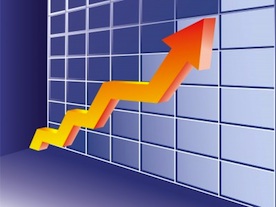 By Joshua Schroeder
By Joshua Schroeder
According to Standard & Poor’s, the dividend component was responsible for 44 % of the total return of the last 80 years of the index. So while dividends may not be sexy to some, they play an important role in delivering portfolio returns and reducing volatility to long term investors.
This truth is no secret and there are annals of literature on the topic of dividend investing. However, much of the conventional wisdom focuses on what I call traditional dividend investing; selecting large global companies with increasing earnings, a solid balance sheet and plenty of cash flow to raise their dividend over time. You know, the “Steady Eddies” of the stock market like KO, PM, MO, JNJ, XOM, INTC just to name a few.
While these stocks can certainly be the foundation of a high quality core dividend portfolio it is unlikely that they will give your portfolio the outsized total returns relative to the market that we are all looking for. Therefore, in my portfolio I try to mix in a few high yielders (+7% yield) that also have a good chance for stock price appreciation. Given the low yield world in which we currently live in high % yields catch our attention, but finding these potential high returners can require a lot of work and patience, as differentiating value from a value trap is difficult. In addition to the traditional criteria of earnings growth, a strong balance sheet and plenty of operational cash flow, below are three of my keys to identifying high yielders:
1. Entry Points: Entering high yield stocks at the right time to capture not only the dividend, but potential stock price appreciation is critical. It requires a lot of patience to wait for the right entry point, but many of these stocks become compelling buys after they have been beaten down, cut their dividend and right sized their businesses. Identifying undervalued high dividend paying stocks in industries that are just emerging from cyclical downturns or that are taking advantage of unusual macro-economic conditions (think low interest rates for mREITS) is a key component to maximizing returns in this space.
2. Insider Buying: For me this may be the most important indicator when analyzing high yield stocks and when combined with point number one gives good insight into potential future returns. I use Peter Lynch´s ratio of 1.5 for current year insider buying to insider selling as kind of an “all clear” signal to go ahead and buy.
3. Dividend History: While the dividend history is no guarantee of future performance it does give a picture of the company´s commitment to returning capital to shareholders as well as insight into how the dividend has performed over the course of entire business cycles. I look to see what the minimum dividend payment was over the last 10 years, how it increased relative to the business cycle and if they have ever suspended a dividend payment.
Some of the stocks in this area that you may want to look at include:
Northstar Realty Finance Corp (NRF): 11.15% yield (dividend raised for 3 consecutive quarters)
Newcastle Investment Corp (NCT): 11.87% yield (dividend raised 3 out last 4 quarters)
American Capital Agency Corp (AGNC): 15.37% yield (dividend lowered last quarter)
H&Q Life Sciences Investors (HQL): 8.11% yield
PDL BioPharma (PDLI): 9.08% yield
Sea Drill Limited (SDRL): 9.21% yield (dividend raised for 4 consecutive quarters)
Knightsbridge Tankers (VLCCF): 14.39% yield (dividend lowered last quarter)
Linn Energy (LINE): 8.04% yield
Frontier Communications Corp (FTR): 11.4% yield (dividend recently lowered)
Note that I have had a long position in NRF for an extended period and recently began accumulating NCT & VLCCF.
Good Luck
—————————————————————-
Twitter: @JoshuaSchroede2 and @seeitmarket Facebook: See It Market
Author has positions in NRF, NCT, and VLCCF.
Any opinions expressed herein are solely those of the author, and do not in any way represent the views or opinions of his employer or any other person or entity.








